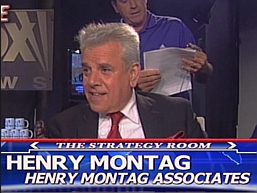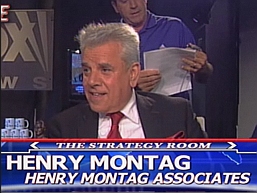

Have you ever discovered a bank entry error in your checking register and you had $100 or $1,000 less in your checking account than you thought? No one likes to lose anything. Imagine how much worse it would be if it were your life Insurance policy worth $250,000, or a million or more, that you thought would be available to a spouse or kids was not going to be available for them.
For that reason alone individuals and trustees should review their existing life insurance portfolios to make sure their coverage doesn’t expire before the insured does. In addition there are a number of other very good reasons to review /audit your life Insurance portfolio to make certain that you’re still getting the most value for your premium dollars based on what’s available today rather than what was available when you first purchased your contract.
It’s also important to make certain that you have the right type of insurance, based on your current objectives today rather than when you first purchased the contract. One should also make sure that the person or people you’ve previously named as beneficiaries are in fact the people you want as beneficiaries today. Equally as important is to determine the correct owner of an Insurance contract. If a life insurance contract is owned by the insured he or she will have to unnecessarily pay a state inheritance tax of approximately 9-10% on the first one million of death benefit. This mistake alone can cost a family upwards of $99,000.
But as stated previously, the most important reason that a contract should be reviewed is to determine how much longer one’s life insurance contract is guaranteed to remain in force. The reason you need to be proactive whether you are a family man who purchased the life insurance for your family or a trustee acting on behalf of the best interest of a trust beneficiary, is that a great majority of life Insurance contracts that were purchased over the last 25 years were “Universal Life Insurance” contracts. These life insurance contracts unlike their more expensive counter parts ”Whole Life Insurance”, were not guaranteed to last for a lifetime since their performance was tied to an annual interest rate which could be higher or lower than anticipated.
Let me explain. Back in the mid 1980’s when interest rates were 14%-15% there were only two types of life insurance contracts. There was term insurance where a specific dollar amount of life Insurance was guaranteed to remain in force for a specific period of time and at a specific guaranteed premium. The other type of Insurance known as “Whole Life Insurance” which as the name implied was guaranteed to be there for the persons whole life. These whole life contracts contained an accumulation account known as cash value which were earning 3% annually and was available to be withdrawn and used for any purpose as long as the person paid a contractual 5% interest charge on the money that was withdrawn.
Getting back to our example if a person had an accumulated cash value of say $50,000 that was earning 3% a person had the ability of borrowing the money at 5% and then placing those dollars in a money market or savings account where they could have earned 14%, as a result, without any additional risk they were able to earn an additional 9% on their $50,000 of cash value.
Due to these higher interest rates being paid by the banks the insurance industry watched billions of dollars in their cash value coffers be withdrawn and transferred to the individual bank accounts of the people it insured. In order to stop these outflows the life insurance industry created a “Universal Life Insurance” product which paid an interest rate based on current interest rates rather than on a fixed rate as had been the case in “Whole Life” contracts. If interest rates went up then insurance coverage would last for a longer period. But what was not so clearly understood was that if on the other hand interest rates decreased then the length of time the coverage would remain in force would be reduced. In other words there was no guarantee as to how long a contract would remain in force. The higher the assumed or projected interest rates would be over the next 20 or 30 years, the lower a premium one had to pay. But if they guessed wrong and interest rates declined as they have, then their life insurance coverage would expire years earlier than originally anticipated.
In order to determine the cost of a universal life insurance premium, an agent or broker would ask their client how long THEY wanted to have a particular amount of life insurance coverage stay in force for, the usual response was between the ages of 92-95. Next they would determine what interest rate they wanted to assume for the next 20-30 years. Once they had that Information the computer illustration would provide the cost/premium needed to keep that particular amount of life Insurance in force for that assumed period.
While this interest-sensitive product stopped the tremendous outflow of monies from an insurance company’s cash values to a banks CD because the insurance company and the bank were now both paying the insured a similar interest rate. The solution was not a long-term fix as it created other problems which began to surface over the last 5-6 years, AS A RESULT 0F our continued low interest rates. For example in the late 1980’s when interest rates were 14 -15% many assumptions were made that interest rates would on average remain in the 10-12% range, the more conservative agents /brokers were projecting 9-10%,while the most conservative individuals were projecting in the 7-8% range. However our current sustained lower interest rate environment paying 1-2% has decimated even the most conservative projections. As a result an original assumption that a life Insurance contract would last to age 92 might now find that their contract would only last to age 82-83.
A life insurance audit/review examines the actual interest rate return earned each year and determines exactly how long the contract will last based on the historic actual return rather than what was once believed and projected. Most individuals or trustees don’t take the time to request such a “Historical Projection” and as a result their contracts are expiring prematurely. The more advance notice an insured or trustee has about a potential shortfall the less additional monies are needed to adjust the contract back to a realistic and desired age of say 92- 95 . I’ve referred to this as the insurance industry’s dirty little secret because at the time the universal insurance contracts first came out no one asked the question as to whether the length of time the contract would stay in force was guaranteed.
I can tell you as a practitioner that the combination of low interest rates, and the fact that the over age 80 group is the fastest growing segment of the population, along with the fact that people are not taking the time to review/audit their existing contracts is causing significant problems for many individuals and trustees that guessed wrong concerning the interest rate they thought their universal contract would perform at. Some institutional trustees are aware of this problem and are employing third party audit firms to conduct an independent review, but many others have not addressed the problem and may be negligent in fulfilling their fiduciary obligations of protecting trust assets for their beneficiaries.
Another very important reason to review one’s life insurance portfolio is to add new features that weren’t available when the original universal contract was first purchased. Most notably is the chronic care rider, which first became available at the end of 2011. Such a rider allows an individual to withdraw up to $116,000 tax-free on an annual basis from the death benefit of their life Insurance contract to pay for qualifying long-term care expense. The ability to withdraw money from the death benefit of a life Insurance contract on a tax-free basis to pay for long-term care costs is a major new benefit that one should attempt to obtain assuming they meet two criteria. One is that they’re healthy enough to purchase a new combo/linked contract containing these provisions, and that they can do so at a premium similar to what was paid for their current Universal or Whole Life contracts.
Being aware of potential problems and opportunities should be first and foremost on the minds of individual owners as well as institutional trustees to protect assets put in place for the benefit of their beneficiaries.
Watch Henry Montag’s video advice on intergenerational wealth building
Henry Montag CFP, CLTC
Financial Forums Inc.
516 640-1315
www.financialforumsinc.com
henry@financialforumsinc.com
to learn more about Henry Montag: http://www.youtube.com/watch?v=yTpACuc33fg

Leave a Reply